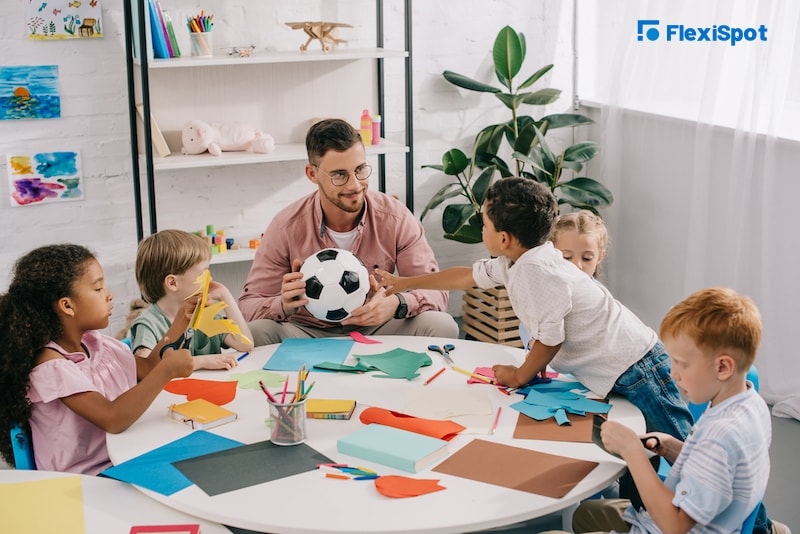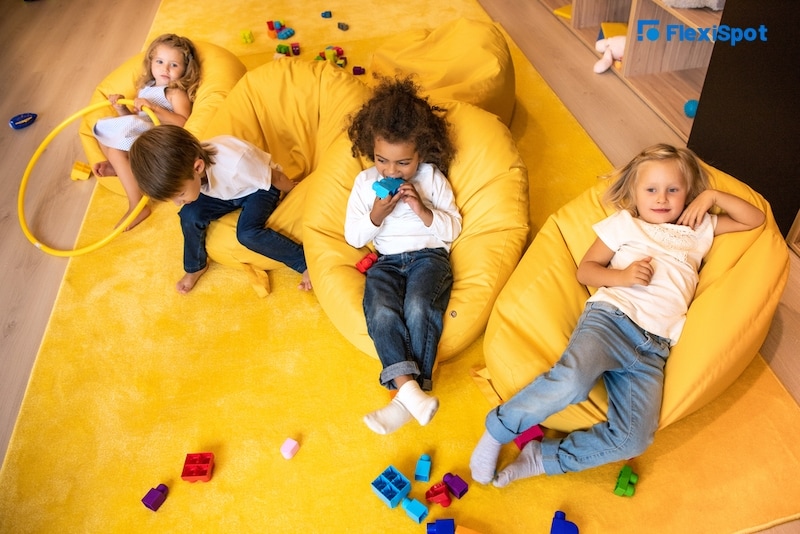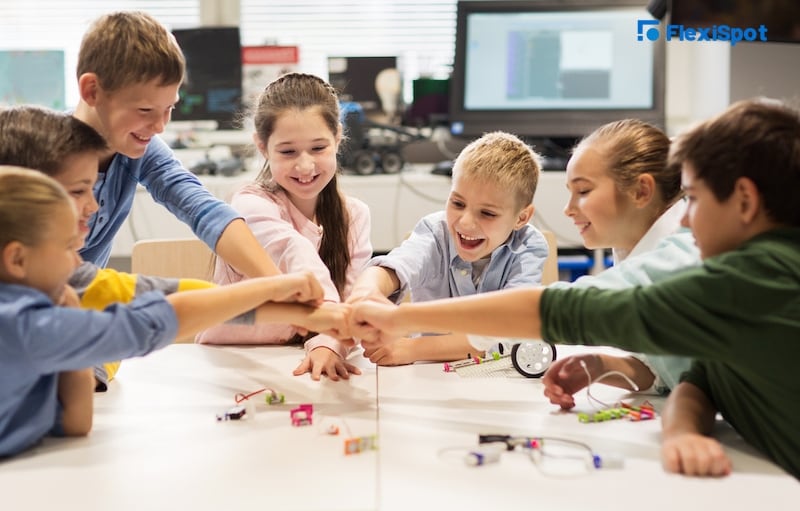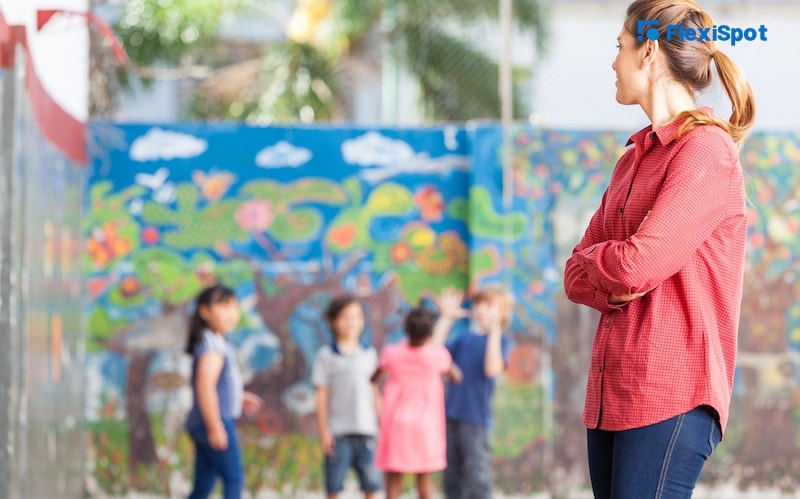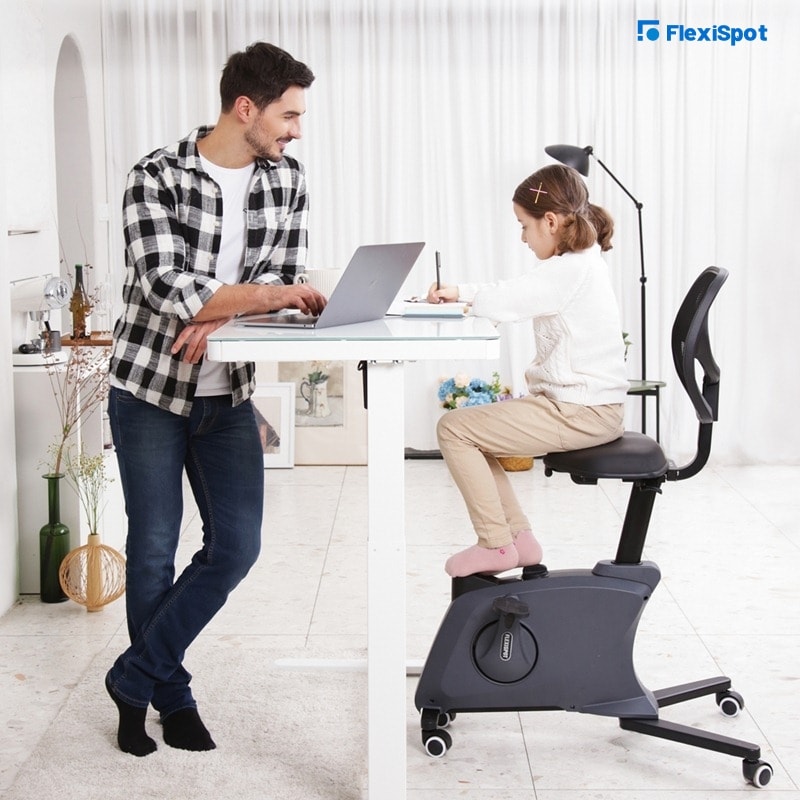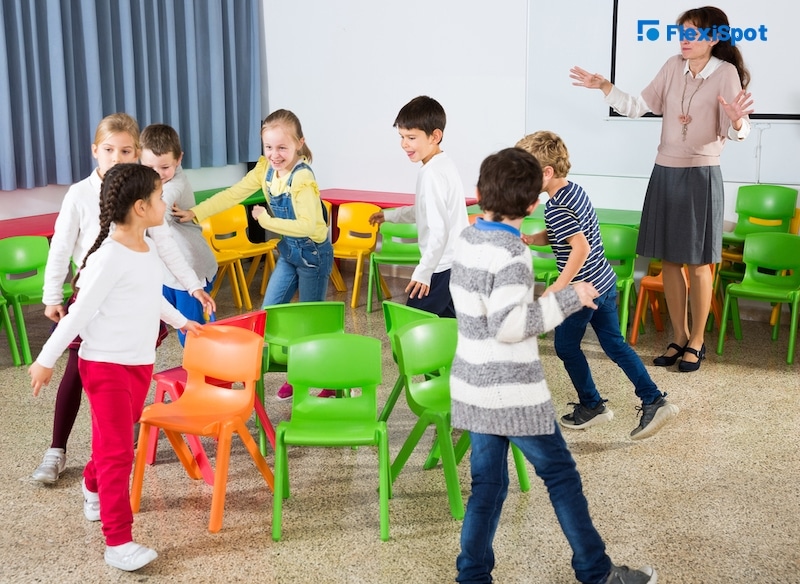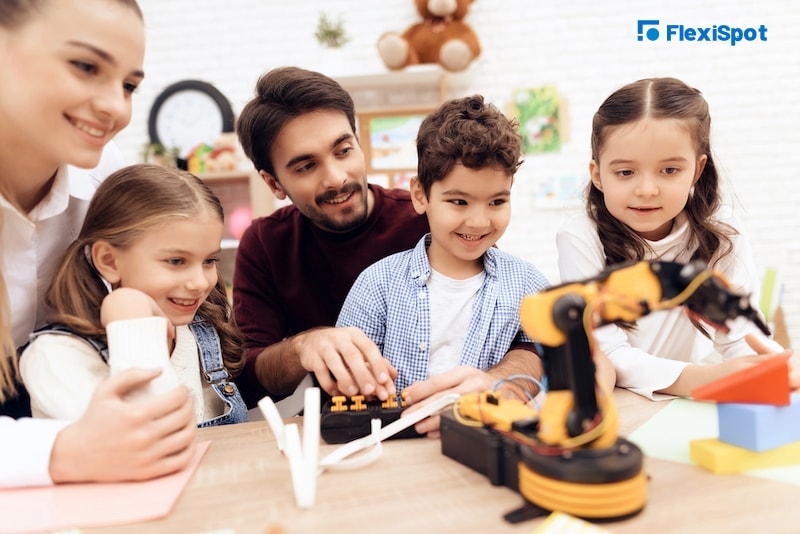To ensure that you have an active classroom, you need to ensure that the kids are learning and are participating in class. Parents and teachers play an important role in enhancing every child’s spirit of learning.
While parents should motivate their kids at home by telling them how important their learning phase is, teachers should mold their minds in the correct way. Building an active classroom will help children have a productive and positive classroom experience while ensuring that they excel in their academics.
Here are some ways to build active classrooms:
Let Go of Traditional Rows of Desks and Tables
Traditionally, children have to sit in rows of desks, with the teacher’s table right at the front of the classroom. Modern learning demands saying goodbye to traditional classrooms and introducing collaborative classrooms. This can be done by arranging tables and chairs in small circles to enough group work. Once children are done with their assigned work, the chairs should form a circle so that the teacher is sitting in the middle.
Throughout the day, teachers should change the configuration of the room so that children do not get bored. Moreover, this will encourage the building of active classrooms since children will have equity in all situations, and they will feel more in control of their physical space. They can decide where they want to sit as long as they are not being disruptive or noisy.
Choose Affordable Solutions
Modern, futuristic learning does not always call for a huge investment that involves mobile desks, hanging reading pods, and specialized seating. While expensive options are great to create a sleek active learning environment, you can always start small while keeping your budgets in check.
To ensure that desks and chairs can be moved around the classroom, add tennis balls to the legs so that the movement does not cause any damage to the floors or disruption in the classroom. You can also purchase cubbies and pillows that will allow children to complete their independent reading in cozy corners of the classroom. Whiteboard paint can also be used to build active classrooms by making most surfaces in a space writable- this will allow children to write down their ideas, encouraging creative freedom. Most young children tend to damage school property due to their natural urge, but this is one of the best ways to put an end to this.
Start with the Four Cs
The four Cs include creativity, collaboration, critical thinking, and communication. If you are looking to create an active learning environment, you need to practice ways to ensure advanced teaching and learning. Once you understand the four Cs, you should be able to understand how you want the learning space to be arranged and what learning will look like in these spaces.
Collaboration is the most important part of active learning as children should be able to work together in groups without feeling the need to overrule one another. Creativity should be addressed by forming a makerspace so that children have the freedom to explore, talk to one another, and build on their ideas. Children should be given the opportunity to innovate, as well as develop skills outside of the classroom. Introduce project-based learning to boost critical thinking and communication- what children learn from each other cannot be learned in the classroom.
Encourage Discussion outside the Classroom
Active classrooms do not only have to be built inside the classroom. You do not have to place the child between four walls to encourage learning. Instead, allow children to have discussions outside of the classroom as well.
You can create a space to aid their learning in hallways or common spaces by placing beanbag chairs or tables in common spaces so that students can talk to each other and collaborate with each other. Many schools try to design classrooms that open up to a courtyard so that students feel free rather than feeling restricted when learning.
Introduce Better Furniture
One of the most important things when it comes to modern learning is to ensure that children are comfortable in class. This means getting them good-quality furniture that will keep them comfortable and focused when they are learning in class. Think about it- children spend the majority of their day sitting in the classroom. If the chairs and tables of the classroom are uncomfortable, they will cause backaches, increasing distraction in class.
This is why all classrooms should adopt the Sit2Go 2-in-1 Fitness Chair. This chair is designed with a breathable mesh backrest that ensures that whoever sits on the chair is comfortable without feeling any strain on the back. The seat cushion is supportive- it ensures no pressure support so that students can enjoy a comfortable experience without getting distracted by any pain caused by longer periods of sitting.
The best part about the Sit2Go 2-in-1 Fitness Chair is that the seat is height adjustable. Even when students are seated, they can easily adjust the height of the chair with a one-touch lever without disrupting the class. Did you know that a sedentary lifestyle causes loads of problems? This fitness chair comes with cycle wheels which means that students can cycle while studying without disturbing other students. Different studies have proven that keeping active by working out during studying helps keep the mind active, increasing concentration and productivity levels.
Gamification
One of the best ways to build active classrooms is to ensure that children stay interested in learning. This can be done by introducing engaging games in the classroom that will help children understand subjects without feeling bored.
In a classroom, you will find many different students who learn by different tactics. It is important that the games you introduce are different so that they can match the interest of every child in the classroom. You can introduce memory games like vocabulary games like bingo or memory cards. One of the best ways to allow modern learning is by keeping your classroom environment competitive so that every child feels interested and wants to learn new things without feeling the burden of new information.
Mix Teaching Styles
If teachers continue to follow the same teaching style every single day, children are bound to get bored. They will eventually zone out and ignore the teacher, and their minds will not be able to absorb any new information. Hence, if you are looking to build active classrooms, you need to do so by mixing up teaching styles for every subject.
The variety of teaching methods will invoke the interest of students in lessons while increasing their curiosity and keeping boredom at bay. You can also introduce some variations such as prediction activity or guesswork when giving a simple lecture so that your lectures remain engaging, allowing students to critically think and absorb all the new information taught to them.
Conclusion
It is important to ditch the method of conventional teaching and replace it with modern learning that will build active classrooms. Modern learning ensures that learning spaces are personalized, collaborative, and project-based learning takes place. You can no longer chain students to their seats and expect them to learn in classrooms.
Changing learning spaces may be met with some amount of resistance. After all, changing teaching methods is not easy, especially if they have been followed for years. Teachers need to learn how to give up control so that classrooms can be transformed and new learning spaces can be created on a budget. Remember, children respond very well to novelty. When they enter a classroom that is different from the conventional classroom, they are more open to learning and spend the lecture time paying attention while absorbing new information.


